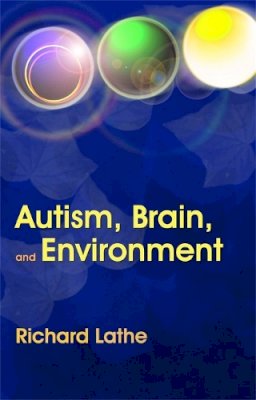
Stock image for illustration purposes only - book cover, edition or condition may vary.
Autism, Brain, and Environment
Richard Lathe
€ 37.01
FREE Delivery in Ireland
Description for Autism, Brain, and Environment
Hardback. In this controversial new book, Lathe contends that the recent rise in cases of ASDs is a result of increased exposure to environmental toxicity combined with genetic predisposition. He proposes that autism is a disorder of the limbic brain, which is damaged by toxic heavy metals present in the environment. Num Pages: 288 pages, Illustrations. BIC Classification: JMC. Category: (P) Professional & Vocational. Dimension: 165 x 241 x 26. Weight in Grams: 628.
The increasing number of people being diagnosed with autism spectrum disorders (ASDs) cannot simply be explained by changes in diagnostic criteria or greater awareness of the condition. In this controversial new book, Richard Lathe contends that the recent rise in cases of ASDs is a result of increased exposure to environmental toxicity combined with genetic predisposition.
Autism, Brain, and Environment proposes that autism is a disorder of the limbic brain, which is damaged by toxic heavy metals present in the environment. Lathe argues that most ASD children have additional physiological problems and that these, far from being separate from ... Read more
Product Details
Format
Hardback
Publication date
2006
Publisher
Jessica Kingsley Publishers
Number of pages
288
Condition
New
Number of Pages
288
Place of Publication
London, United Kingdom
ISBN
9781843104384
SKU
V9781843104384
Shipping Time
Usually ships in 5 to 9 working days
Ref
99-10
About Richard Lathe
Richard Lathe is director of Pieta Research, a biotechnology consultancy based in Edinburgh. He has extensive experience of academic and industrial research, his most recent area of interest has been in brain research and neuroscience, particularly focusing on the limbic system, autism and Alzheimer's. He has previously held professorship at the Universities of Edinburgh and Strasbourg. He is the author ... Read more
Reviews for Autism, Brain, and Environment
The author covers the problems of recognition and diagnosis, genetic contributions, brain abnormalities, limbic dysfunction, physiological dysregulation, body and mind, biomedical therapy, and links with other disorders, as part of a detailed positioning of this arguments... The argument is concisely presented, extensively referenced and made easy to follow to its conclusion... Overall this is an important book, well argued and ... Read more
